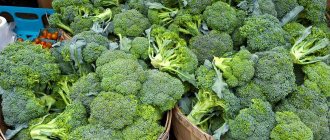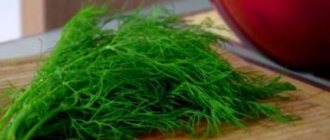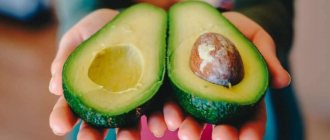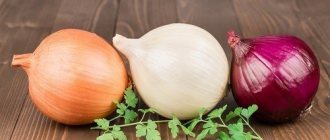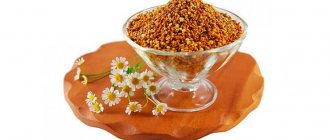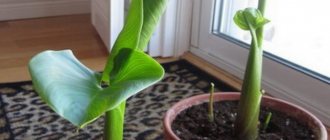The question of how to store ginger worries lovers of its hot and spicy taste, as well as those who appreciate its beneficial properties. The spice is well preserved at home in fresh, dry and pickled form.
The article contains useful tips and tricks that will help you properly and for a long time preserve the taste and healing qualities of the product.
Ginger is a unique product that has a spicy taste, pleasant aroma, and is also rich in vitamins, micro- and macroelements. To preserve it without losing its beneficial properties, it is important to organize storage correctly.
Methods for storing fresh root
The whole root can be kept in a dry cellar or basement along with other root vegetables at a temperature within 0 ... + 4 ° C, wrapped in parchment paper or foil. It is important that the vegetable does not come into contact with light. In the absence of lighting and at the appropriate temperature, it can lie for up to 6-7 months. Approximately once every 2-3 weeks, stocks must be sorted, rejecting rotten and moldy specimens.
The easiest way to store fresh ginger is in the refrigerator. If you place it in a paper bag, it will stay fresh in the vegetable compartment for 1 week. The following manipulations will help extend this period to at least 3-4 weeks:
- Only fresh, unpeeled root vegetables are selected, without areas of spoilage or mechanical damage;
- vegetables are carefully wiped and dried with a paper towel;
- each copy is wrapped in a paper napkin or towel;
- vegetables wrapped in paper are placed in special plastic bags with zippers or tightly wrapped in cling film (the air must first be removed from the bag);
- packages are placed in the compartment for vegetables and fruits.
If the root has already been peeled, then storing ginger in the refrigerator is done using the following technology:
- the rhizome is cut into pieces;
- the cut slices are laid out in a glass container;
- the contents of the jar are filled with cold boiled water (wine, vodka, sake, lime juice);
- placed in the refrigerator.
In this way, the cut root vegetable can be stored for up to 2-3 weeks, while it does not lose most of its taste and beneficial qualities. Alcohol-containing liquids extend the shelf life to 7-8 weeks.
Natural drying
The easiest method for preparing ginger root for tea is natural drying at home. But it takes a long time. The root must be washed, peeled, cut into thin slices or grated. Place on a tray, having previously covered it with a cloth or cooking paper.
Place in a dry room or on the balcony. They must be well ventilated. But so that the sun does not fall on the ginger. To ensure that it dries evenly, it is stirred several times a day until the pieces of the root vegetable become hard and brittle. Drying whole will take much longer. In a private home, you can cut ginger into circles, string them on a thread and hang them next to the stove.
In 2-3 days it will be ready. If ginger is made in the form of tea leaves, it must be peeled and crushed in a mortar or blender. To prepare tea, mix two tablespoons of crushed root and tea leaves, pour 400 ml of boiling water over them. Let it brew for 30 minutes.
To freeze or not?
Ginger can only be stored in the refrigerator for a limited amount of time. Not the most successful, but popular and longer-lasting storage method is freezing. The technology is like this:
- The root vegetable is first peeled (it is better to scrape it like a carrot, since under the thin skin there is the largest amount of useful substances);
- then the rhizome can be chopped on a coarse grater, or cut into slices or strips;
- the prepared vegetable is laid out in individual food containers or plastic bags;
- placed in the freezer for storage.
The product does not require defrosting before use. This method can keep ginger fresh for 10-12 months. It will have all the taste, but will lose its beneficial properties almost completely. Therefore, it is better to try to find space in the refrigerator and not freeze root vegetables.
Helps with joint inflammation
Ginger has a powerful warming and anti-inflammatory effect. Effectively relieves pain, especially in joints with arthritis and arthrosis. Improves their mobility. Prolongs youth.
- This is not a complete list of the beneficial properties of ginger.
- We can talk for a long time about its powerful effect on the human body.
- But the most important thing you need to know is proper storage of the root.
The safety of all nutrients, vitamins and minerals that a person needs for proper functioning depends on this.
We process and store
It is not always possible to store ginger for a long time at home; sometimes it is necessary to urgently process the excess spice left after preparing a dish.
There are several ways:
- Pickling. The root vegetable must be peeled, cut into thin slices (plates), then laid out in layers in a ceramic or glass dish. Prepare a marinade from 6 tbsp. l. granulated sugar, 4 tsp. salt and ½ cup of rice vinegar (based on 350 g of ginger). The solution is brought to a boil and the pre-prepared vegetables are poured over it. After complete cooling, the workpiece is put into the refrigerator for 6-7 hours. Then the product can be eaten; it retains freshness and all nutritional qualities for up to 3 months.
- Alcohol infusion. Unpeeled ginger (30-40 g) is placed in an opaque dark glass container and filled with 200 ml of medical alcohol (at least 70% vol. strength). Then infuse in a warm and dark place for 2 weeks. The tincture is used only for medicinal purposes as a component for various mixtures and preparations; it must first be diluted with distilled water in a ratio of 1:4.
- Ginger infused with alcohol. A whole rhizome without skin, filled with a strong alcoholic drink (vodka, rum, sherry, etc.) in a glass jar or ceramic container, is stored in a dark and cool room (cellar, basement, pantry, etc.) indefinitely. This product is added to baking dough, meat marinades, sauces, soups and broths.
- Decoction. This product can be stored for no more than 5 hours in the refrigerator and about 3 hours at room temperature, so it is prepared immediately before use. The root is finely chopped (4-5 cm), poured with 250 ml of clean cold water, then placed in a water bath for 15-20 minutes, boiled under a lid. Remove from heat and cool.
See also
How to freeze ginger in the freezer at home, you can Read
Dry storage
If there are a lot of root vegetables, they can be dried. With this method of preparation, all beneficial substances and vitamins are preserved in ginger, since they are not exposed to extremely low or high temperatures. The dry product is stored at room temperature and takes up very little space, which is always missing in the refrigerator or freezer.
To properly dry ginger, you must proceed as follows:
- wash the rhizomes in running water, remove dirt and plaque;
- Using a small knife or teaspoon, carefully scrape off the peel;
- cut into thin strips, slices or plates (as transparent as possible so that the product dries better);
- cover a baking sheet with baking or parchment paper and place ginger pieces on it in 1 layer;
- dry in the oven for 1 hour at a temperature of about +45...+50 °C;
- remove the baking sheet from the oven, then turn each piece over to the other side;
- place in the oven for another 1 hour.
You can dry ginger naturally. To do this, the chopped vegetable is laid out on a flat surface (baking tray, tray, cutting board), then placed in a well-ventilated dark room for 3-4 days.
Ready-made dry slices break well. They can be left whole or ground into powder. How long dried ginger can be stored depends on the storage location. At room temperature in a container with a tightly closed lid, the dried product can be stored for up to six months. You can keep it in the refrigerator for more than 2 years.
Before use, the slices are soaked for 15-20 minutes in cold water. They can be added to tea, various drinks, salads, meat dishes and desserts.
What type of ginger is there?
This is a plant of tropical latitudes. In Russia, it is cultivated only by agronomy specialists and not on an industrial scale. The bulk of Russians purchase ginger root at retail outlets.
The following types are actively used for various purposes:
- Fresh is a smooth, hard tuber, light beige in color, with no dark spots, traces of mold or flabby.
- Dried is a dense root of a plant, without any defects, dried either in the sun or using warm air. This product has the richest taste compared to other types.
- Ground is processed dried. This is how it is used in cooking.
- Marinated - fresh, cut into thin strips and kept in a special liquid composition.
- Grated ginger root is not sold in stores. But it’s easy to prepare it at home by chopping it on a grater.
- Black ginger is the same as light ginger, but it comes to the retail outlet dried and unpeeled. It is characterized by a significant aroma and increased pungency.
- Ginger oil is an essential oil made from the ginger tuber. Sold in pharmacies.
As an addition to desserts and drinks
The spicy root vegetable, finely chopped and mixed with an arbitrary amount of honey, can be used as an additive to desserts and various homemade drinks. For those people who do not like sweets, there is an alternative recipe made from ginger and lemon. This interesting combination is well suited for making unusual sauces for meat and fish dishes, as well as for the production of drinks. Such preparations should be stored in the refrigerator for no longer than 10-14 days.
In the off-season, when the risk of colds increases, you can use ginger to strengthen the immune system. The recipe for making a delicious health-improving remedy is as follows:
- Peel and grate 120 g of fresh root vegetables;
- Remove skin from 4 lemons and cut into cubes;
- Mix both products and grind using a blender;
- transfer to a glass jar, then add 250-280 g of honey.
After preparation, keep the mixture in the refrigerator, consume 1 tbsp. l. in a day.
Storage in the ground
Unpeeled ginger can be stored in a soil mixture prepared from humus, peat and dry river sand, taken in equal parts. The rhizome is placed in a pot or box, covered with this soil and left in a dark and cool room (cellar, basement, pantry). If you move the container to a warm and bright place, the root stored in the ground will sprout. Greens are used in salads and as an additive to tea drinks.
See also
Types and cultivation of ginger, where it grows and what it looks like in natureRead
Making candied fruits
From peeled ginger root and cut into slices, strips or slices, you can make an exquisite delicacy - candied ginger. They are prepared as follows:
- the rhizome (200-250 g) is peeled and cut as needed (cubes, slices);
- the pieces are laid out in a pan, 0.5 liters of water are poured in and simmered over low heat for 1 hour;
- Separately cook sugar syrup from 200 g of sugar and ½ glass of water;
- the boiled pieces of root should be thrown into a colander or sieve and allowed to drain;
- then they are placed in a container with the prepared syrup and boiled for another 1 hour until transparent;
- line a baking sheet with parchment paper and place slices of boiled ginger on it in 1 layer;
- the pieces are slightly dried in the oven at a temperature no higher than +40...+45 °C;
- then each slice is turned over to the other side and dried a little more in the oven;
- Now the slices need to be rolled in powdered sugar or sand.
Ready candied ginger is placed in a tightly closed jar and stored in the refrigerator for no more than 30 days. Homemade sweets are great for helping with motion sickness and relieving nausea.
First aid for colds
The crushed root of the plant along with honey and lemon perfectly relieves chills, warms the body and relieves inflammation. This remedy will perfectly complement the main treatment and will be a good help for a weakened body. It will saturate it with vitamins, relieve fever and give strength.
The right purchase is half the success
Fresh ginger, which can be found in stores, is a dense, thick root covered with a thin peel. The color of the skin can be dark brown (almost black) or white. It depends on the method of pre-processing the vegetable. If the root crop is mechanically cleaned after digging and simply washed with water, then it retains its dark natural shade.
When treated with chlorinated solutions, the rhizomes become almost white.
The freshness of ginger root directly affects the preservation of its original taste, aroma and beneficial consumer properties. The fresher the ginger, the longer the shelf life will be.
A quality vegetable should be:
- elastic and dense (the flaccid soft rhizome was dug up a long time ago, has been stored for a long time and during this time has lost most of its useful qualities);
- heavy (the flabby light root has lost moisture and become less fragrant);
- smooth, dry and even, uniform in color, without signs of damage, dents, dark spots, mold, rot;
- the peel is thin and smooth (too thick, dense skin indicates that the root crop has been lying somewhere for a long time and is not fresh);
- the color of the juicy and dense pulp varies from light greenish-yellow to rich dark yellow (the older the plant, the darker the rhizome inside), the presence of coarse thick fibers in the pulp also indicates the great age of the ginger bush.
The decision about how fresh the product is and how to store it must be made in the store. Vegetables that do not meet the necessary requirements will have poor taste and are poorly stored.
How to choose the right one
The taste of ginger and its shelf life depend on how good a specimen we choose when purchasing. This applies to both fresh root and powder or pickled pulp. Let's consider the selection criteria in more detail.
Fresh
When choosing ginger, you must adhere to the following purchasing rules:
- Examine the root from all sides. Choose it without green sprouts that look like buds. If they are present, this means that the ginger has begun to prepare for germination and has already lost some of its beneficial properties. And the shelf life in this case will be minimal.
- Pay attention to the peel. It should be dense, slightly shiny, without visible damage or dark spots.
- Try bending the root vegetable. Good ginger should be elastic. If it is flaccid and bends easily, then this is a sign that it has already lost some of its moisture, so it is better to refuse to purchase such a specimen.
- Break off the root if possible. When broken, a crunch should be heard - this indicates freshness. It is ideal if juice appears when you break it.
- Try picking off the skin with your fingernail. If it works, and a characteristic smell immediately appears, then the root crop is fresh, and, no less important, young. Old ginger sometimes tastes bitter, and its pulp is already woody, with a lot of fiber. It's better not to buy this one.
Ginger is of Asian and African origin. In terms of taste, Asian is preferable. You can distinguish it by its lighter and smoother skin.
Powder
Ginger powder is usually packaged in consumer packaging. Most often, these are small bags made of thick paper. Because of this, when choosing a powder, it is very difficult to evaluate its appearance, aroma and taste.
That is why the recommendations when choosing a powder are very simple:
- pay attention to the integrity of the packaging;
- make sure that the expiration date does not expire;
- choose a trusted spice manufacturer whose products you have already purchased.
Pickled ginger
Pickled ginger is also sold in consumer packaging. However, unlike powder, we will be able to visually evaluate the product. Here are the main selection criteria:
Coloring of the slices: When purchasing pink pickled ginger, pay attention to the color. If the color is uneven, then most likely the root is old and fibrous.
Transparency of the marinade: The marinade in containers with ginger should be completely transparent. If it is cloudy, then it is better to refuse the purchase.
Compliance of packaging: It must be without visible damage. The packaging label must contain information about the manufacturer and expiration dates.
Possibility of use
You can store ginger at home in several different ways, which determine its future use. In cooking, ginger is used as follows:
- dry and fresh spices are used to season meat and fish dishes;
- pickled and dried slices are used in making sauces;
- ground dry spicy root vegetable is included in many spice mixtures (curry and others);
- ginger powder is added to baked goods: buns, cookies, muffins, gingerbread cookies;
- grated fresh and frozen vegetables are used in various alcoholic and non-alcoholic drinks, compotes and teas;
- the pickled root vegetable is used in salads (especially in Japanese, Chinese and Korean cuisines);
- Candied thin slices of ginger can reduce attacks of nausea, improve digestion and appetite.
Due to the large number of useful components, ginger is widely used for medicinal purposes. It increases the body's defenses, normalizes hormonal levels, stabilizes the emotional and psychological state, and enhances metabolism. The spicy root has antibacterial, antiseptic and anti-inflammatory properties, which allows it to be used in the treatment of colds. Ginger has proven its effectiveness in the fight against malignant neoplasms.
